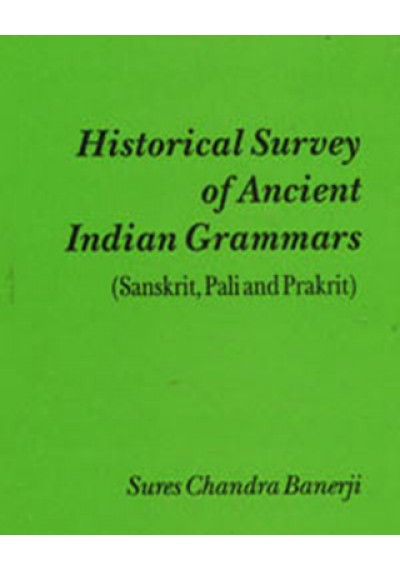PUBLICATION DETAIL

Historical Survey of Ancient Indian Grammars
(Sanskrit, Pali & Prakrit)
| Author | : Sures Chandra Banerji |
| ISBN | :81-85616-40-X |
| Price | : |
| Size | :23 cm |
| Year | :1996 |
| Format | :Hardbound |
| Description | :220p. |
| Qty |
About the Book
In Western tradition, 'Grammar' (from Greek grammatike) stands for that branch of knowledge which deals with the inflectional forms, rules for their application, syntax, and some times, the phonetic system of the language, and its representation in writing. In India the term 'vyakarana' connotes much more than the term 'grammar' does. In Sanskrit the science of language is called 'vyakarana' which includes phonetics, etymology, accentuation, syntax, word formation by declension and conjugation, and semantics.
Grammatical thought, in India, is coeval with the Vedas. The preservation and understanding of the vedic texts were regarded as a religious duty. The attempts to analyse the word for their better understanding are as old as the Taittiriya-samhita. We know from the Brahmanas and the Upanisads that Vyakarana was regarded as a vedanga, i.e. an auxiliary to the vedic studies since very old times.
To the oldest phase of Sanskrit grammatical literature belong the pratisakhyas. Then follow the grammarians whose works have been lost but who have been referred to by Panini in his monumental work Astadhyayi. The oldest grammarian of India whose complete works have come down to us, is Panini.
There is an erroneous notion among some people that Panini's is the only grammar of ancient India. Ancient and medieval India has not only produced numerous grammarians but also has seen the development of several grammatical schools independent of one another. To name a few are, Katantra, Mugdhabodha, Sarasvata, Sanksiptasara, etc.
Eminent scholars of Pali and Prakrit did not lag behind. They also wrote grammars of their respective languages and dialects. For Pali we have the grammars of Kaccayana, Moggallana, Aggavamsa; for Prakrit Vararuci, Trivikrama, Markandeya, Canda, etc. Synopses, commentaries, super-commentaries, etc. continued to be written since very old time down to our time.
The bibliographical references contained in this work are very valuable for researchers.
About the Author



Browse Subject



